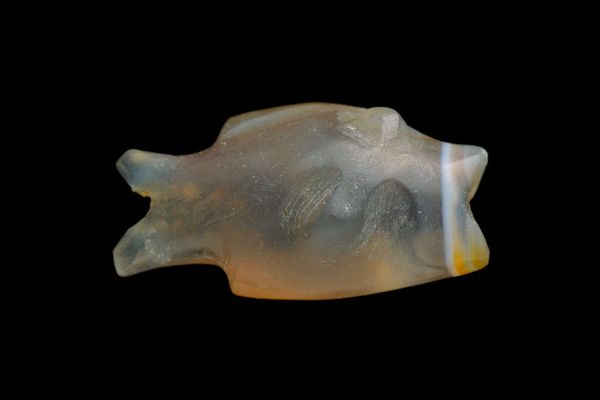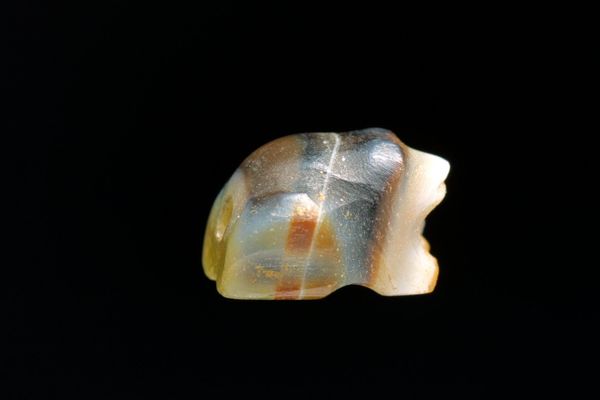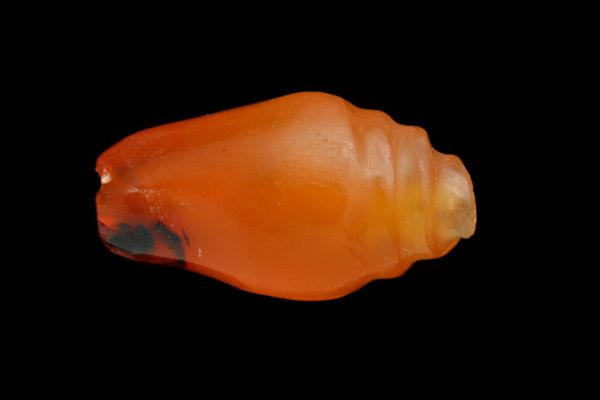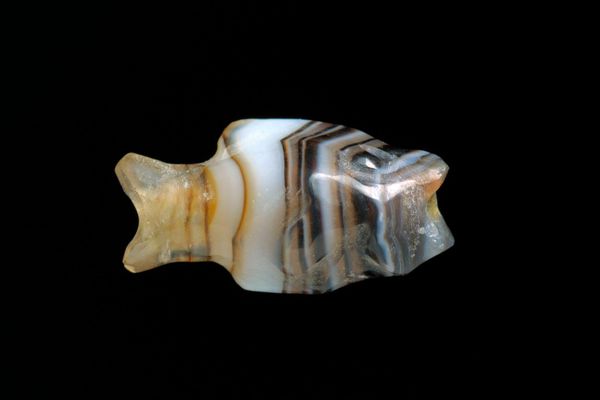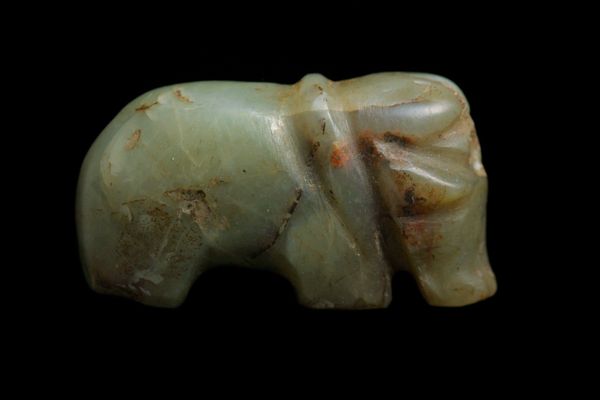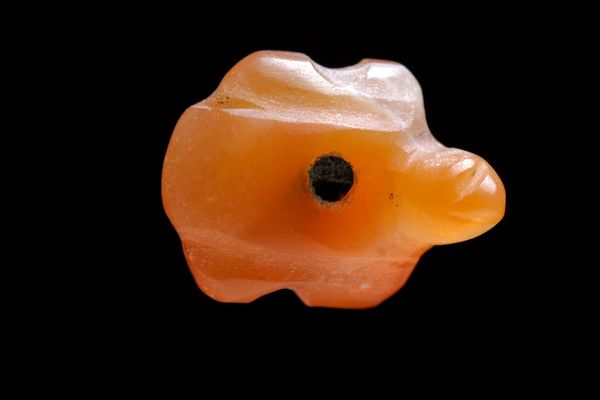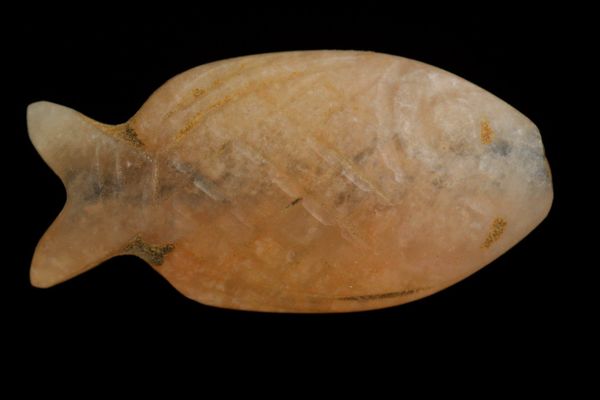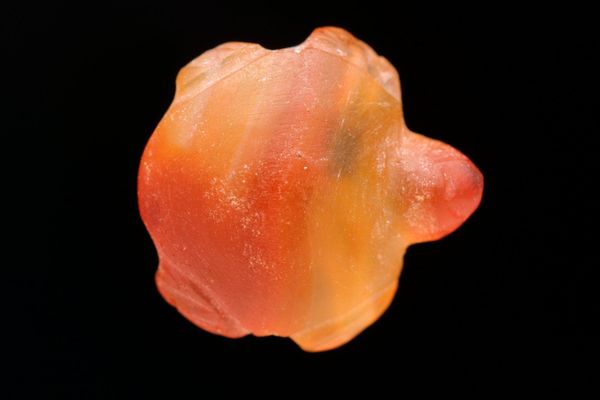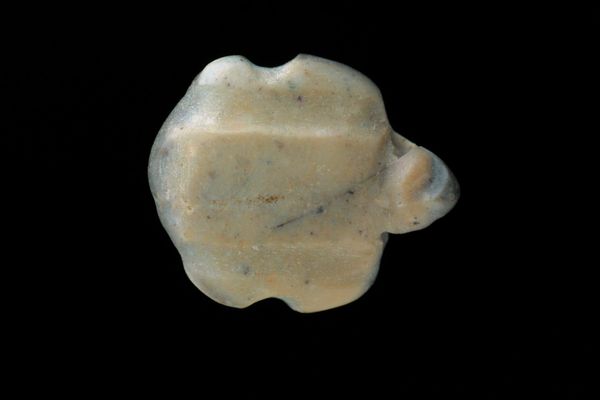
carving, bronze, sculpture
#
carving
#
bronze
#
figuration
#
ancient-mediterranean
#
sculpture
#
islamic-art
#
dark
Dimensions: 5/16 x 7/16 x 3/16 in. (0.8 x 1.1 x 0.5 cm)
Copyright: Public Domain
Editor: This is a small sculpture, carved into the shape of a fish. It's from sometime between 501 and 800, so fairly old, and is housed here at the Minneapolis Institute of Art. It’s crafted from bronze. I'm struck by its simplicity; what can you tell me about it? Curator: The fish form is compelling isn’t it? Aquatic creatures, particularly fish, held multifaceted symbolic weight in the early Islamic world. Have you considered the visual properties inherent in representing water? Editor: I hadn’t, not really. Other than it being shiny and… wet? Curator: Precisely. Water equals life, purification, and abundance, particularly crucial in the arid regions where Islam flourished. And the fish, drawing its life from that element, what could it embody? Fertility? Blessing? Something more esoteric, more magical perhaps? Editor: So, by wearing it as a bead, were people hoping to channel those qualities? To take on some of those blessings themselves? Curator: Quite possibly! Bronze itself would have held meaning, the process of casting, the transformative properties from raw material to enduring artifact. What do you make of its miniature scale? Is it meant for intimate contemplation or overt display? Editor: I'm guessing it was kept close to the wearer as something private but also protective. Seeing how those symbols can layer up… it gives it more depth than I initially realized. Curator: Indeed. It reflects an amalgamation of cultural beliefs and artistic expressions that continue to resonate across time. Editor: It’s amazing to think how such a small piece can contain so much. I'll never look at ancient beads the same way again.
Comments
No comments
Be the first to comment and join the conversation on the ultimate creative platform.
